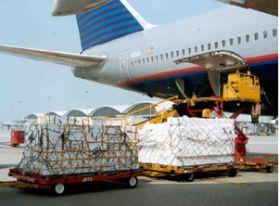
The International Air Transport Association (IATA) today (7 December) released data for global air freight markets in October 2016 showing that demand, measured in freight tonne kilometers (FTKs), rose 8.2 per cent year-on-year -the fastest pace of growth seen in 18 months.
Freight capacity, measured in available freight tonne kilometers (AFTKs), increased 3.6 per cent over the same period.
Commenting on the results,Alexandre de Juniac, IATA’s director general and CEO, said:'Global air freight markets look set to end 2016 on a high note. Demand is growing at its fastest pace in 18 months.
'It remains to be seen how long this growth trend will endure after the year-end peak period and we still face headwinds from weak global trade,' he added. 'But there are some encouraging signs. The peak has been stronger than expected. And purchasing managers are reporting a pick-up in new export orders. So we will enter 2017 propelled by some much-needed positive momentum.'
Some one-off factors are likely impacting October’s positive results: there is potential modal shift to air cargo following the collapse of the Hanjin Shipping Company in August; and there could be some last minute reliance on air transport as companies exercised caution in ordering as a result of weak market conditions earlier in the year, the IATA said.
Structural market shifts are also likely underpinning a portion of the stronger performance. This includes strong growth in cross-border e-commerce and pharmaceutical flows. Preparation for the increasing popularity of sales events such as Black Friday and Cyber Monday may also have contributed to the increased demand peak.
'The drivers of stronger growth are sending a major signal for change to the air cargo industry. Whether it is e-commerce or the trade in pharmaceuticals, shippers are demanding more than current paper processes can support. The shift to e-freight is more critical than ever,' said de Juniac
Airlines in all regions except Latin America reported an increase in year-on-year demand in October. However results continued to vary considerably.
Asia-Pacific airlines saw demand in freight volumes both from the ‘Within Asia’ air cargo market as well as on routes to and from the region increase in October 2016 compared to the same period last year. Regional demand increased 7.8 per cent and capacity grew by 3.9 per cent. International freight volumes expanded 8 per cent in October, contributing to an annualised increase, in seasonally adjusted terms, of 15 per cent since March 2016.
European airlines posted the largest increase in freight demand of all regions in October, 13.4 per cent year on year. Capacity increased 5.9 per cent. October’s positive performance corresponds with the sustained increase in export orders in Germany over the last few months and the ongoing weakness in the euro. International freight demand grew by 13.2 per cent year-on-year in October – the fastest pace since April 2011 – and the upward trend in seasonally-adjusted traffic was very strong.
Latin American airlines experienced a demand contraction of 0.1 per cent in October 2016, compared to the same period last year, while capacity decreased by 1.8 per cent. International freight volumes grew by 0.2 per cent. In seasonally-adjusted terms this is an improvement over the last few months. The region continues to be blighted by weak economic and political conditions, particularly in the region’s largest economy, Brazil.



